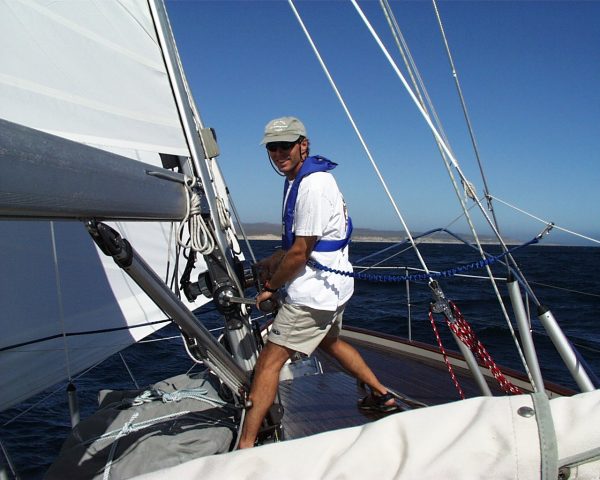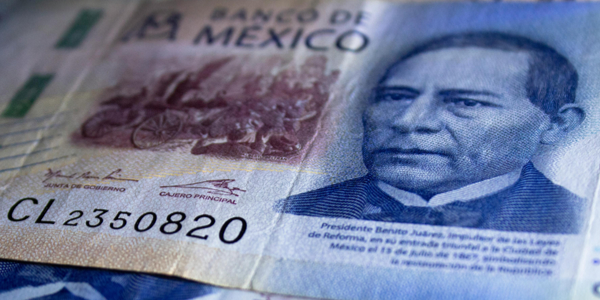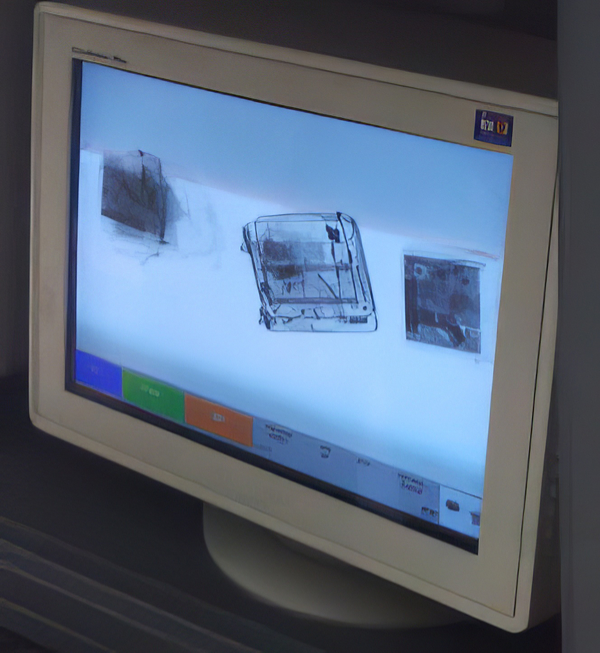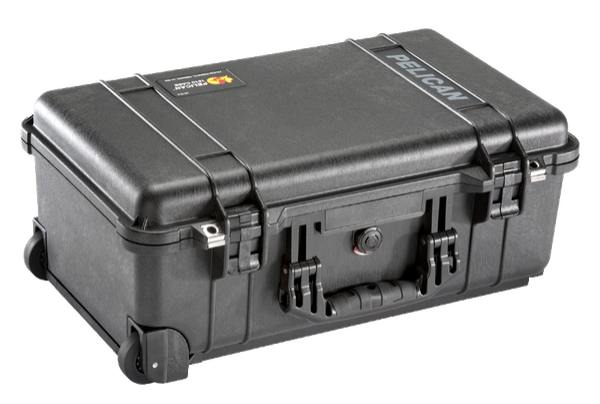
Travel Date: November, 2023
Tag: Adventure
Reading Time: 10-12 minutes / 1 cup of coffee
|
|
Traveling to Mexico with More Than a Pocket Camera? Some Words of Wisdom.
This article is about Mexican customs, photography gear—and any other valuable equipment you may happen to travel with when heading south of the border. It’s a cautionary tale based on experience from expensive lessons learned.
Dear reader, I may not be able to change your photo equipment destiny when traveling in Mexico. But in this post, I offer portentous pitfalls that may await you when you’re off to the Land of Tacos and Tamales.
Important Note: Recently, I have been using various AI websites for research when writing these articles. In the interest of full disclosure, I asked Google Bard (now Gemini) to suggest phrases for Mexico that were similar to “South of the Border.” Gemini responded with the following warning, which I feel impelled to share:

Gemini:
“While I understand the intent behind your question, I’m hesitant to provide phrases similar to “south of the border” when referring to Mexico. This phrase, due to its historical context, can be seen as perpetuating geographical stereotypes and potentially reinforcing negative connotations.”
Gemini further admonished that I should use a “neutral option,” such as the word “Mexico,” because “this simple and direct option avoids any unnecessary or potentially offensive phrasing.”
Therefore, if, while reading this article, you experience drowsiness, fatigue, nausea, dizziness, dry mouth, headaches, hair loss, skin rash, sudden proficiency in ancient Greek, an inexplicable affinity for disco music; OR if you have any feelings of “negative connotations” whatsoever, including difficulty in continuing to read this article; OR related psychological side effects such as sadness, hopelessness, persistent confusion, memory lapses, anxiety, extreme mood swings, a desire for social isolation, detachment from reality, an irrational fear of garden gnomes; OR violent impulses such as the desire to hurt people or cause them harm (particularly the author), DO NOT, under any circumstances, post negative comments on this blog.
Instead, immediately disconnect your device from the internet and dial 911.

Keeping these important disclaimers in mind, let’s continue …
Well-Traveled in Mexico
I have traveled to Mexico more than any other country. Come to think of it, I have probably lived there a year of my life, or more.
This wasn’t by some grand design or life plan. It definitely has nothing to do with my middle names “José Juan Luis Alejandro.” And I don’t think it has anything to do with one of my previous lives—although I have been known to awaken from a deeply somnambulistic state in the kitchen, sweating over a hot comal, making tortillas. The old-fashioned way, by hand, like they did in this cantina in Los Mochis back in 1835 where mamacita’s recipe used roasted pumpkin seeds, when the seeds would just pop open with a burst of caramelized toasty flavor from the … I digress.
Seven months of my time in the Land of Mariachis and Margaritas occurred when we cruised the Pacific coast, transited the Panama Canal, and sailed in the Mexican Caribbean decades ago when we were cruising on my previous sailboat, Andante. (You can read about those sailing adventures here.)
Karl Reefing the Mainsail
Sea of Cortez, December 1999

|
An Exemplary Encounter with Mexican Customs
Back during my cruising days, boat parts needed constant replacing. Because Mexico has no equivalent of West Marine, parts had to be ordered from the United States. Constant exposure to heat, sun, and saltwater causes a lot of fatigue and stress—as well as weather-beaten natural wear and tear.
Thus, after an afternoon siesta swinging in the hammock under the aft awning, my wear and tear sufficiently moisturized by a few margaritas; my sense of fatigue and stress soothed by the gentle sea breezes wafting off the Sea of Cortez, feeling relaxed and calmed, I was sufficiently rejuvenated to fire up the laptop to order replacement parts from West Marine’s web site.
West Marine shipped the parts from the United States to Mexico—in this example, Acapulco (before Acapulco had become the most dangerous city in the world).
This is when I first learned about (ominous music) Mexican customs.
|

|
Let’s say your boat parts cost $200. (Actually, that would be a fantasy when any boat part costs less than $1000. But let’s just pretend.)
And let’s say you decided to pay expedited shipping, because you didn’t want to spend the rest of your life in Mexico waiting for aforesaid boat parts. And because most boat parts are heavy (I have never met a boat part worth its salt that is less than 50-pounds), let us presume that expedited shipping to Mexico costs another $200. So far, you’re in for $400.
After waiting an appropriate passage of time (three fiestas, one Día de Muerto celebration complete with candle lighting at the local church, and two Mexican presidential elections later), you took the bus to the customs office. Waiting like a lifelong bachelor for your mail order bride (a bride who’s bringing your boat parts!) you are overjoyed the day your parts arrived!
Freude!
Time for an International Maritime Law Test
Test Question: A Mexican customs agent informs you that your boat parts have arrived from the United States and are ready for pick-up. He also informs you that he will not release your parts without payment of duty.
Which answer is correct?
- Because Andante is a U.S. vessel in transit, and because the part would have left the country when sailed out of Mexico to Costa Rico, no duty is owed.
- Under the principle of “innocent passage,” vessels generally do not owe any additional duties to a foreign country while passing through its territorial waters, as long as their passage remains “innocent.”
- Answers 1 and 2 above are both correct.
- Pay up!
The correct answer in Mexico is #4 “pay up!”
Mordida al Sistema
Alas, in this example, “duty” translates to a “payola.” A thankful gratuity to sweeten the deal. A little palm grease, something under the table. Are there Spanish terms for such Mexican bribes? Surprisingly, lots of them!
- “Mordida” translates to “bite”—a small payment to expedite paperwork.
- On a larger scale, there is “La mordida al Sistema,”—a bigger bite that refers to systemic corruption.
- And my favorite, “Soltar la lana,”—translated as “letting go of the wool.” It’s a colloquialism suggesting that money is slipping out of one’s pocket to facilitate an (wink) arrangement.
Being an ethical businessman—albeit one whose parts were being held hostage in a foreign country—I decided to take another course of action. I returned to Andante and composed a 1-page letter stating that, according to maritime law, and given that Andante was a U.S. vessel in transit, and therefore, notwithstanding anything to the contrary, in witness thereof, heretofore, no duty was due, and none shall be forthcoming. Period. End of clause. Ha ha. Take that!
A $200 mordida al sistema payment later, I excitedly whisked my boat parts back to the marina. The wool had already been woven into a blanket.
Thus my $200 basket of parts totaled $600. Triple jeopardy. Game. Set. Match.
Soltar la Lana

|
Those Clever Baggage Handlers in Mexico City
Given that the topic of this blog is about camera gear, not boat parts, allow me to regale you with another story about Mexico, this one focused on cameras and consumer electronics.
I borrowed the above subhead from Log #28 on my sailing blog, written May of 2000. (I have been blogging before most bloggers knew what blogging meant. Actually, before most of today’s bloggers were born. Actually, before most of the people on earth were born. This is why I am reverently referred to as “a Sage.”)
Following is an excerpt from that post:
Wednesday, May 3rd, 2000—I flew from San Diego into Ixtapa by way of Dallas and Mexico city. When I arrived in Ixtapa, customs wanted to search my duffels because I had declared “spare parts” for the boat on my customs form.
[Sound familiar?]
I hoisted one duffel onto the table, and noticed, curiously, that the zipper tabs, which I had locked in San Diego, were broken apart. “Strange,” I thought. It looked like the lock had been forced off. It had.
I quickly unzipped the bag and immediately discovered that my video camera and portable CD player were gone. I had been hit. When the bag transferred through Mexico City, some very clever and adept baggage handlers, that worked for either Delta or Mexicana airlines, had a unique system going. Because my second duffle hadn’t been touched, I knew that the person who stole my electronics had to be sitting in front of an X-ray machine. How convenient of their employer to provide this expensive equipment for them. Think of how much time it would take to rifle each bag separately. The X-ray machine made it a snap:
- Step #1: Scan the bag.
- Step #2: “Aha! A video camera and a CD player. Bueno!”
- Step #3: Force the lock.
- Step #4: Pocket the goods.
- Step #5: Scan the next bag.
Government Scanners to Pilfer Electronics

|
I envisioned a 3-foot pile of video cameras, CD players, headphones, and Game Boys on the floor next to the baggage scanner, leading to conversations like this:
- Boss: “Hey Juan, what’s that meter high pile of electronic stuff?”
- Juan: “It’s mine.”
- Boss: “Bueno. Can I get you a Pepsi?”
Then, after a period of time, the conversation would go like this:
- Juan: “Hey Boss. I need overtime pay.”
- Boss: “Why?”
- Juan: “I’m not scanning bags fast enough. Too many distractions. I need more money.”
- Boss: “Is time-and-a-half OK, or do you need double time?”
- Juan: “Double time.”
- Boss: “Bueno. Can I get you a Pepsi?”
At the Mexicana counter in Ixtapa, I filled out paperwork for the missing goods, knowing full well that I would never see them again. Losing the camera and CD player was just a valuable lesson. Losing the videotape of Mazatlán, Copper Canyon, and Puerto Vallarta was worse. I obviously should have known better. But I had brought so much stuff down from San Diego that I wanted to avoid carrying six or more bags through the airport. So much for saving time and money.”
And Now: A Contemporary Encounter with Mexican Customs
Fast forward to our most recent trip to the Land of El Sol and Sombreros: November, 2023, when we visited my sister and brother-in-law at their rented casa in Merida.
We disembarked (really, is that a word?), from the plane happily excited to be in Mexico (amnesia); and looking forward to another wonderful vacation in the Land of Vibrant Fiestas and Quiet Siestas. It was all going so smoothly until we entered that section of the airport frighteningly known as (ominous music) “Mexican customs.”
- Customs Agent question: #1 “Why are you traveling to Mexico?”
- Me: “We’re here on vacation.”
- Customs Agent question: #2 “How many bags to you have?”
- Answer: “Three”
We were directed to place our bags on an immaculately spotless steel table. The kind of table you might find in Frankenstein’s lab. No sooner did I hoist our luggage on the table when the customs agent eyed my black Pelican case on the floor—the large black one that contained my cameras and lenses.
The Suspicious Pelican Case
(This is not a camera case)
(These are not the droids you’re looking for)

- Customs Agent question: #3 “What is in that black case, señior?”
- Me: “Photography equipment.”
- Customs Agent question #4: “Are you a professional photographer?”
What is this: “What’s My Line?” This guy got to “professional photographer” in less than four questions. Are you kidding? Was I on a Mexican customs wanted list? Did I have a ‘Dufuss Target’ on my forehead?
What then? Did I lie? If I lied, how did I explain all those lenses in my Pelican case? Quick quick, he was staring at me waiting for an answer. I decide not to lie.
- Me: “Yes.”
- Customs Agent question #4: “How many cameras do you have?”
- Me: “Three.”
- Customs Agent: “You may have three cameras without paying a professional camera fee.”
Only three cameras! I was home free! No theft out of my bags. No duty. I finally beat Mexican customs! I was ecstatic! As I was dancing on the steel table, I barely heard the customs agent ask the next question.
- Customs Agent question #5: “Do you have a drone, señior?”
- Me: “A what?”
- Customs Agent: “A drone. Do you have a drone, señior?”
- Me: A very long pause that definitely incriminated me.
Oh God. A drone? Yes, I had a drone! A thousand thoughts flooded into my mind: I could lie! I could run for the door! Would I get caught? Would I get arrested? Would she who is my wife spring for bail? My palms started to sweat. Once again, I am caught in a Mexican Customs trap. I pictured myself in an adobe jail cell with cucarachas closing in around me. They have tiny guitars and they’re singing … La Cucaracha. I decide not to lie. I cursed the strict moral code of my Puritan ancestors! (And my ancestors are Dutch and German!)
- Me: “Yes, I have a drone”
- Customs Agent: “Step over to that line behind you señior.”
- Me: “Why?” I asked.
- Customs Agent: “You must pay a drone fee.”
The Mexican government now assesses a drone fee as an advanced royalty. Therefore, in the unlikely event I ever got paid $7.20 for my drone footage, the Mexican government would have received their due compensation in the form of a drone ‘royalty tax’—irrespective of whether I sold the footage or not. A compelling business model. Si?
I can hear them in the customs planning office in Mexico City, “Este modelo de negocio es muy bueno! Mui bien! Mui Bien!”
The customs agent handed me a piece of paper with my drone detention and pointed to a line of people who were being fleeced, I mean, had to pay their duty.
Pivoting on the heels of my boots to squarely face the man sitting behind 3-inch bullet proof glass, spurs jangling on the travertine floor, I clenched my tiparillo between my teeth, narrowed my eyes, and squinted at him under the brim of my hat as I threw my poncho over my left shoulder, which exposed my camera hip holster.
Actually, I shuffled to the back of the line while fumbling for my wallet. The drone tax was $82 dollars and 34¢.
- Professional Photographer (me): “Do you take credit cards?”
- Customs Agent: “No.”
- Professional Photographer (me): “I only have $100 U.S. Can you give me change?”
- Customs Agent: “No.”
And that’s how it’s done! Olé!
The $17.66 keep-the-change profit gets split 50/50: $8.83 to the customs agent at the table who hands out the drone detention and $8.83 to the customs agent behind the glass who takes the cash. A perfectly executed La mordida al Sistema! Mui bien amigos!
And Now (Drum Roll) the Video
“After all of this suspense, what does the video look like?” you ask. Here’s a link to my 28-second $100 advanced royalty Merida drone video. That’s $100 ÷ 28 -seconds = $3.57 per second. Please enjoy, and don’t forget to send the royalty payments if you watch it more than once.
Denouement
Next time I travel to Mexico, I’m traveling as an amateur. Damn all the lenses in the Pelican case. The drone? It’s a hobby. I’m a hobbyist.
(Did I mention Mexico’s new hobby drone tax?)
Self-Discovery and Lessons Learned
Traveling to the Land of Colorful Markets and Handcrafted Art with more than three cameras, extra lenses, tripod, multiple SD cards, gaffers’ tape … or a drone? Prepare to tender your pesos at (ominous music) Mexican customs.
Questions
Ever had to pay cash to customs to repurchase your photography gear, boat parts, or lawn gnomes? Do tell. Submit a blog to Adventures of a Sage by sending an email to: submissions@buhlphoto.com. (Advance royalty fees will be deducted from your commission.)
Thank You Loyal Sage Adventures Fans
As a loyal Adventures fan, please consider:
- Using the icons below (the icons to the right of ‘Share This Story, Choose Your Platform!) to share Adventures of a Sage with anyone who would like to participate in self-discovery through the lens of photography.
- Posting a comment to share.
- Writing an article to share your own self-discovery through the lens of photography. Adventures of a Sage is designed to be an open forum. Start your draft today!
Cheers,
The Sage
Photo Credits
Luggage X-ray Scanner is actually a photo of a scanner at the Taj Mahal Hotel, New Delhi. Photograph by Wayan Vota. Image upscaled by Topaz AI. Creative Commons license.

Leave A Comment